A week or so ago in another thread on roofing — Dino asked if galvy could be soldered properly .
Seemed like that was buried where not many folks might see the responces , so I thought I’d show some rivetted 26 gauge aprons being soldered to show the process .
Fluxed with muriatic acid , then sweated together .
Laced together in several passes so it doesn’t get too hot and run .
Once stitched fully the sides are fluxed and dressed .

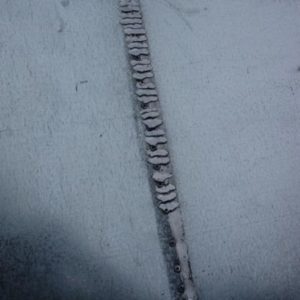
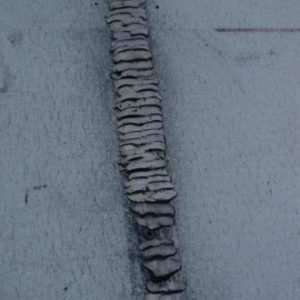
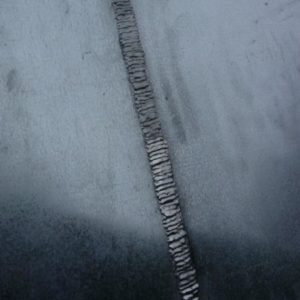
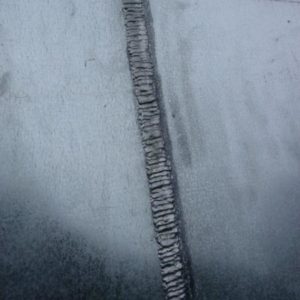
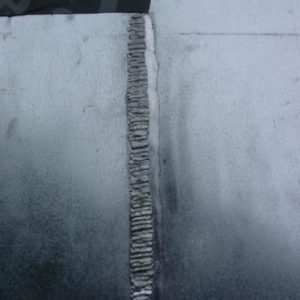



















Replies
same flux as Copper?
Welcome to the
Taunton University of Knowledge FHB Campus at Breaktime.
where ...
Excellence is its own reward!
Nope , muriatic acid for galvanized or buy a special flux from a specialty outfit .
I use a paste flux for copper .
U'r a rivetting son of a gun. What type of rivets do you use on galvy? Steel rivets don't solder well and some SS rivets I've gotten don't take solder well either. We don't fool with galvy much anymore, but I used to breath a lot of muriatic fumes. I always had trouble with rust where the flux had been.http://www.quittintime.com/ View Image
Steel , they are a little touchy , but you can see the results .
I don't use it much anymore , but these folks wanted a bit less cost per sheet .
Labor is basically the same . Be done there tomorrow .
View Image
View Image
Nice stitching.http://www.quittintime.com/ View Image
Why thank you matey !!
Hey -
I had an idea earlier. The two of us need to team up on a project, photo it very well, write a story and sell it to JLC. http://www.quittintime.com/ View Image
Sounds like a plan Sam !!
I think that's a great idea.But aren't you two going to run up against the ideals set out in Lincoln's stirring "House Divided" speech:
"I believe this government cannot endure, permanently half slate and half free."'Man who say it cannot be done should not interrupt man doing it' ~ Chinese proverb
View Image
You a Dad yet?http://www.quittintime.com/ View Image
Not yet. Somewhere in the 7-10 day range.I will be counting on some advice from the forum of course!'Man who say it cannot be done should not interrupt man doing it' ~ Chinese proverb
View Image
DW had just asked - glad it's getting close!
Kids are usually a good deal, but ya gotta' wait so long to see how they vote.
Forrest - still waiting
Yep, it'll be nice to get out of beta testing and on to the real thing.Hoping she'll turn out to be a libertarian like dear old dad. If not I might have to tell her that you need to be 50 before you can vote ;)'Man who say it cannot be done should not interrupt man doing it' ~ Chinese proverb
View Image
Walt
Your projects are always so friggin interesting.
thanks for the great picts.
Not planning on soldering any galv metal any time soon but love the info.
From a cost savings perspective, why wouldn't you put a fold on the sheet ends and interlock them. Should be water proof that way.
Jeff in PA
Jeff ,
I'm used to gutter liners / aprons all from one sheet , so this is a similar operation .
I don't like having to lock 8 ' sheets together lengthwise over old boards . Too hard to tighten them up properly , and soldering is tougher too with a larger void if not closed tightly .
I'd have done exactly the same on this job if it had been 20 oz . copper .
Walter
Very interesting. I have loads of questions. Can you elaborate a bit more? What kind of iron is used for this.... a big electric one or one of those heat it up with a torch kind? Can you show some photos of the soldering process? I presume the soldering is done in place and not done on the ground then brought to the roof. Right?thanks
Sapwood ,
The irons used on this project were hand held , wooden handled soldering coppers .
The heat source was a 20 lb . propane tank fitted with a plumbers blast furnace .
On other jobs I might use an acetylene heated iron that is constantly heated by a burner behind the iron .
I just received word today to install a bay window roof using galvanized -- I'll try to be more painstaking with my picture taking when I do that job next weekend .
Heres the roof .
Walter
View Image
so did you just run the iron down each side when you were finished lacing to get that affect? and why the edges and not the middle too? I appreciate the time you spend taking pictures and posting them. Thanks.I can learn more from pictures than most can teach.
View Image
Mike ,
Yes I flux the sides after lacing or stitching the lapped seam , and then run the iron down to dress the joint . It helps keep water from working under any small voids in the lacing process and makes a more finished look .
You want the strength of the stitches to keep the rivetted seam watertight .
Thanks for your interest .
Walter
You want the strength of the stitches to keep the rivetted seam watertight .
Didn't you tell me solder wasn't supposed to be structural a couple of weeks ago? :^)http://www.quittintime.com/ View Image
I knew you'd see you that !
The rivetts hold the sheets together , but the thicker stithches keep that joint watertight as opposed to just sweating them together .
If you were doing the same operation with sheet copper, would you use rivets too or just sweat the whole seam. Also, if sweating a copper sheet rather then galv, would you use soldering copper on that too?
There are three different ways I join sheets of apron depending on several factors .
Rivetted seams in either copper or galvy , locked seams --3/4" hem on sheets facing up and down , or standing seam .
Any of these ways work , but for this job I choose to use 8' lengths of metal . If I were locking seams I wouldn't exceed 4' and standing seam panels would be narrower than 30 " .
You have to join the sheets somehow for a good result . Soldering a 3' sheet of lapped metal will not work well.
Soldering coppers are my hand held soldering irons .Copper ingots are used to form the implement .
Walter,Thank you for this thread. It has been very informative.Chuck Slive, work, build, ...better with wood
Chuck ,
As always you're too kind . Dino had asked in another thread if it was possible so I thought he and others might have an interest .
Thanks again and have a great 4th Holiday .
Best , Walter
Gotcha, I've used soldering copper on my galv gutter. Pop rivet then soldered with your technique and it worked well. The reason I asked is sweating larger sheet goods, galv or copper, I was wondering how you joined them. I can see that attempting to join a long seam could be problematic since metal expansion, as you proceed along the seam, tends to create problems after a few inches. The 'stitching' technique you describe seems like a good method. When I did mine, I didn't use horizontal (right angle to seam) small soldered runs, just a long continuous "melt" of solder over the pop rivets and galv. sheet metal. After preliminary assembly with pop rivets, I clamped the seam with vice grip metal clamps, cleaned the seam with muratic acid then just used coiled solder and a hot copper iron to run a continuous bead of sweated solder along the joint. In my gutters, I didn't have to make long solder runs, maybe 6 to 8 inches at most but they turned out beautiful and have never leaked. I painted the interior of all the gutters with "galvigrip" paint to prevent any oxidation of the metal interior surface. After 13 years, I still don't see any rust or oxidation on any of gutters.I used a block of Ammonium Chloride (sal amoniac) to "tin" the iron ...what is your practice tinning the soldering copper???
Similar to your tinning method .